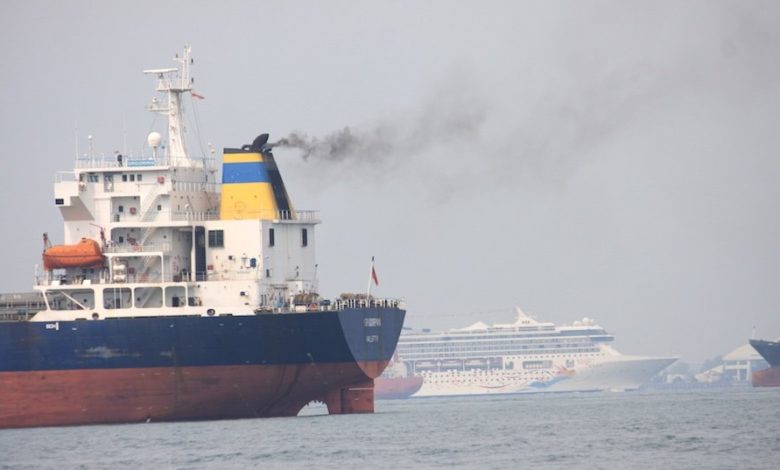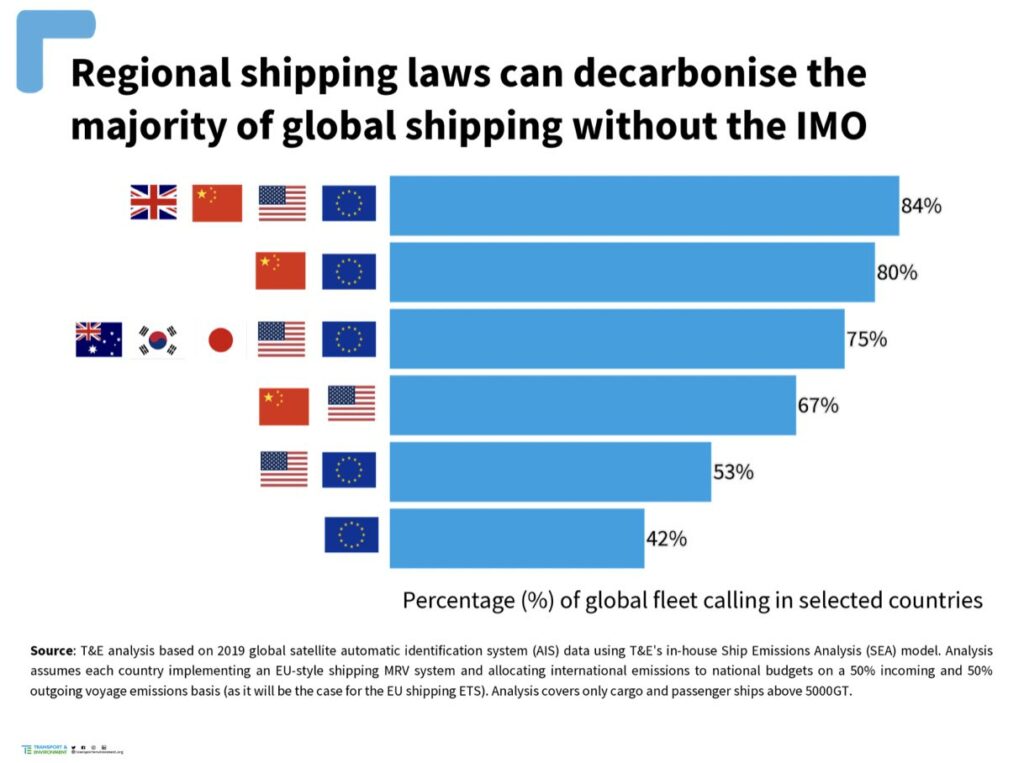Europe, China and US could decarbonise 84% of shipping emissions without ‘ineffective’ IMO

With the next meeting of the Marine Environment Protection Committee (MEPC) just a few weeks away pressure is growing once again on the International Maritime Organization (IMO) to deliver stricter green targets.
A new study from Brussels-based NGO Transport & Environment (T&E) suggests Europe, China and the US could decarbonise 84% of all global shipping emissions without the need for the “ineffective” IMO.
T&E analysis of 2019 automatic identification systems shows 84% of shipping traffic goes through Europe, China and the US. If these economies were to regulate ships calling at their ports in a manner similar to how the European Union plans with its emissions trading scheme, they could decarbonise the lion’s share of the industry, T&E claims.
Jacob Armstrong, sustainable shipping officer at T&E, said: “Efforts to decarbonise shipping at the IMO have so far been miserable. The need for consensus at the global level has brought us nowhere. But there is a much easier way to do it. With the vast majority of ships passing through Europe, China and the US, these leading economies can unilaterally regulate emissions without relying on the ineffective IMO.”
While China, Europe and the US only account for 40% of shipping emissions, the vast majority of ships call at one of their ports.
Member states at IMO’s sister body at the United Nations, the International Civil Aviation Organisation (ICAO), voted last month to adopt a collective long-term global aspirational goal (LTAG) of net-zero carbon emissions by 2050, something that is far head of IMO’s current demands which call for emission cuts of 50% compared to a 2008 baseline.

